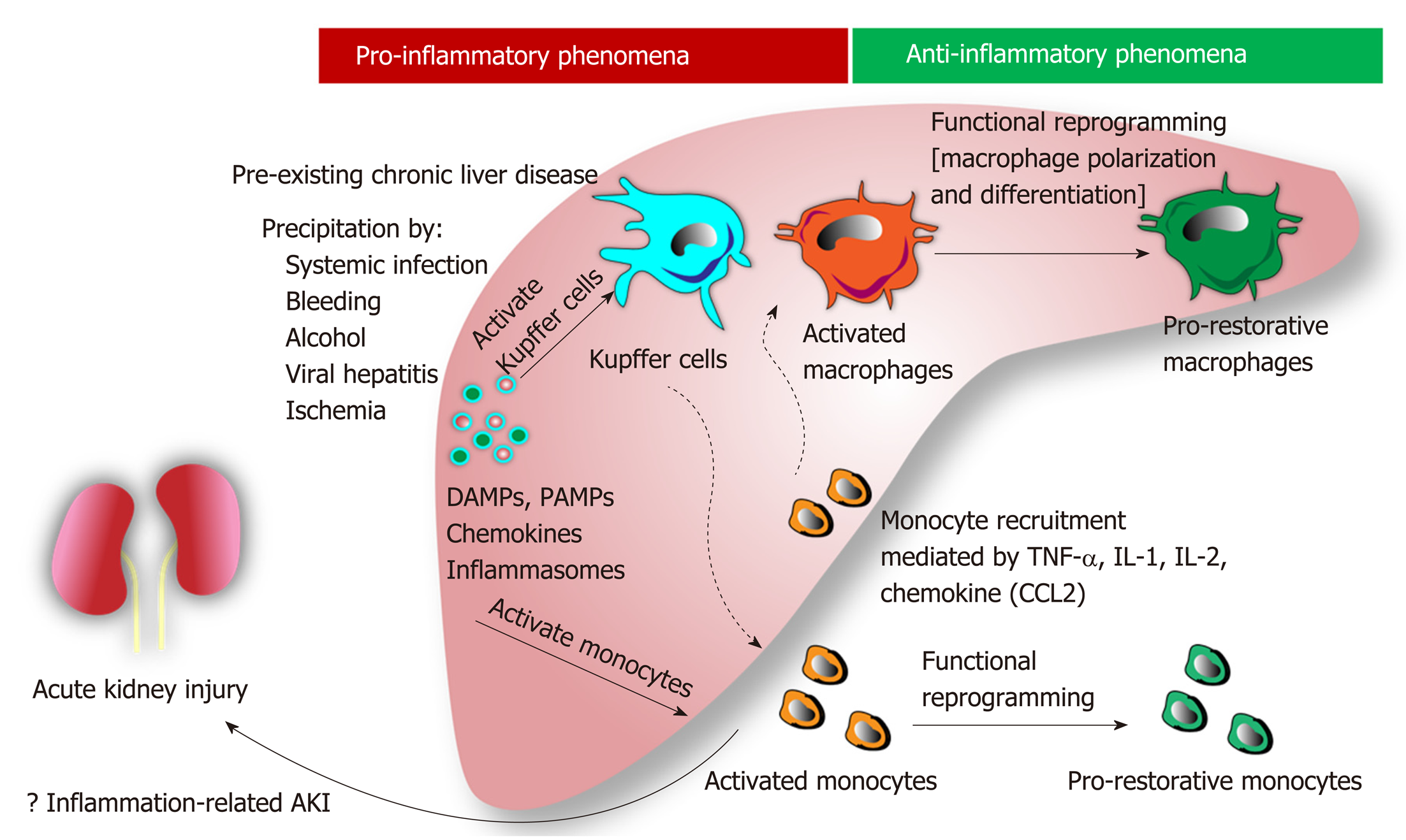Copyright
©The Author(s) 2019.
World J Gastroenterol. Jul 28, 2019; 25(28): 3684-3703
Published online Jul 28, 2019. doi: 10.3748/wjg.v25.i28.3684
Published online Jul 28, 2019. doi: 10.3748/wjg.v25.i28.3684
Figure 2 Role of monocytes and macrophages in the immunological aspects of acute-on-chronic liver failure and acute kidney injury.
Several risk factors addition to pre-existing chronic liver disease initiate hepatic inflammation which release various types of damage-associated molecular patterns, pathogen-associated molecular pattern, chemokines and inflammasomes. These mediators affect to the inflammatory cascade through monocyte and Kupffer cell activation which subsequently turn on either liver or systemic immunity. While, in the liver, Kupffer cells signal to bone marrow-derived monocytes for recruiting them to the liver, systemic (peripheral) monocytes also become activated monocytes which expanding the pro-inflammatory responses or systemic inflammatory response syndrome (SIRS). Overwhelming of pro-inflammatory cascade is supposed to be the background of acute kidney injury (AKI), similarly septic AKI (inflammation-related AKI). However, the functional reprogramming of both activated macrophages and activated monocytes could attenuate SIRS by differentiating to pro-restorative phenotypes that favors liver tissue resolution and healing. DAMP: Damage-associated molecular pattern; IL: Interleukin; PAMPs: Pathogens-associated molecular patterns; SIRS: Systemic inflammatory response syndrome; TNF-α: Tumor necrosis factor-alpha; AKI: Acute kidney injury.
- Citation: Chancharoenthana W, Leelahavanichkul A. Acute kidney injury spectrum in patients with chronic liver disease: Where do we stand? World J Gastroenterol 2019; 25(28): 3684-3703
- URL: https://www.wjgnet.com/1007-9327/full/v25/i28/3684.htm
- DOI: https://dx.doi.org/10.3748/wjg.v25.i28.3684









